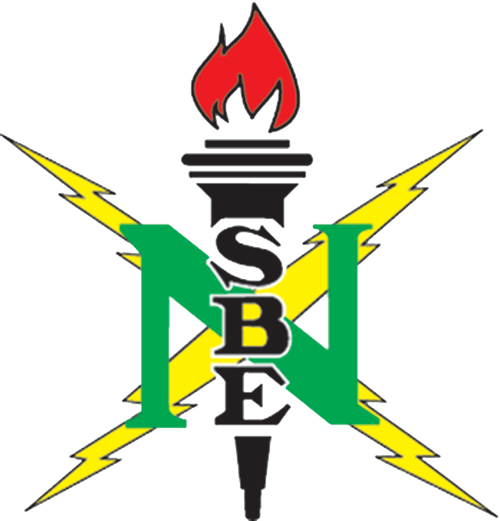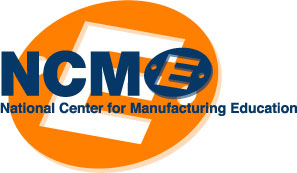Explore high-paying careers in clean, high-tech Connecticut manufacturing.

About Us : Information
What is the Regional Center for Next Generation Manufacturing (RCNGM)?
Karen Wosczyna-Birch, Executive Director of the Regional Center for Next Generation Manufacturing (RCNGM), greets an astronaut at the Johnson Space Center in Houston, summer of 2008. |
The Regional Center for Next Generation Manufacturing (RCNGM) addresses the need for highly skilled workers in the manufacturing workplace by building programs that provide resources to educators and students interested in learning new technologies in manufacturing. The RCNGM is directed by the Connecticut College of Technology (CCOT), a virtual organization representing technology curriculum geared toward engineering and technical training offered at Connecticut's 12 community colleges. The RCNGM has created a seamless pathway, with no barriers or loss of earned credits, for students transitioning from a two-year college to a four-year program at partnering colleges and universities within the state of Connecticut.
Through the RCNGM pathway, the curriculum programs have been designed to allow students to retain course credits earned in a two-year community college and apply earned credits toward engineering and technical training at partnering Connecticut colleges and universities, including Central Connecticut State University, the University of Hartford, University of Connecticut, Fairfield University, University of New Haven and Charter Oak College.
Goals of the Regional Center for Next Generation Manufacturing (RCNGM):
- Develop new curriculum/programs in such new technologies as laser manufacturing, photonics and fuel cells. The curriculum revolves the requirements and demands as identified by industry/workforce needs.
- Prepare faculty for the development and implementation of industry-driven, next-generation manufacturing coursework and laboratories. Through a partnership with the Connecticut Business and Industry Association (CBIA), the RCNGM will continue to provide faculty with industry externships in cutting-edge technologies like fuel cells, laser manufacturing, bio-manufacturing, aerospace and nanotechnology. Participating faculty develop work-based learning curriculum projects for students, which are disseminated through workshops and a dedicated website. For more information please click here.
- Make high school students and young adults aware of opportunities that exist in the current manufacturing environment through a comprehensive marketing campaign. This campaign includes such events as co-sponsored expositions involving local business and industry. Connecticut students and young adults will be encouraged to take advantage of technology and engineering training opportunities being offered through the Connecticut College of Technology and Connecticut's 12 community colleges new manufacturing environment. Graduates of these programs will be prepared for careers in new fields such as laser manufacturing and fuel cell production.
- Increase the opportunities for collaborations between manufacturers and schools which will ultimately increase the pool of qualified technicians in the workforce.
Funding for the Regional Center for Next Generation Manufacturing is provided by the National Science Foundation's Advanced Technology Education Program. For information on other programs/grants provided through the National Science Foundation, please visit their website by clicking here ATE Centers.
Click this link to learn the history of the RCNGM.
For more information please contact:
Dr. Karen Wosczyna-Birch,
Executive Director
College of Technology, Connecticut Community Colleges
61 Woodland Street
Hartford, CT 06105
Telephone: (860) 244-7608 /
Facsimile: (860) 244-7883
E-mail: karenlee@snet.net
Mary deManbey, Program Manager
Connecticut Business and Industry Association (CBIA)
P: (860) 244-1975 /
F: (860) 278-8562
E-mail: mary.demanbey@cbia.com









